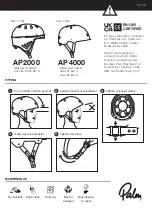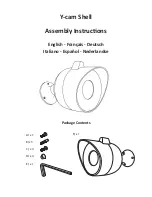
1
ITI® Sentrol™ PIR Motion Sensor
ITI Part No. 60-XXX
Installation Instructions
Document Number: 466-xxxx Rev. A PRELIMINARY
April 2000
Preliminary 4/5/00
Product Summary
A motion sensor (passive-infrared or PIR) detects move-
ment within a specific area by sensing the infrared energy
emitted from a body as it moves across the sensor’s field of
view, causing a temperature change in the sensor’s zones.
When this motion is detected, the sensor transmits an alarm
signal to the control panel.
Use this motion sensor to protect locations where door/win-
dow sensors are impractical or not needed. For example,
use a motion sensor to protect large areas or open floor
plans. Motion sensors also provide backup protection for
door/window sensors.
The ITI
®
PIR utilizes advanced signal processing, a new
custom designed lens, and a new custom designed sensing
element. The combination of these improvements provides
false alarm immunity for pets with a combined weight of up
to 40 pounds while still providing superior human catch
performance.
This wireless motion sensor includes the following features:
❑
35 feet by 40 feet coverage area
❑
Three minute transmitter lockout time after an alarm
that helps extend battery life
❑
Cover-activated tamper (optional wall-activated tamper
is included)
❑
Supervisory signal transmitted every 64 minutes to the
control panel
❑
Sensor low battery reports (trouble) to the control panel
❑
Field-selectable sensitivity options (standard setting
required for pet applications)
Installation Guidelines
This PIR was designed for use in the presence of pets hav-
ing a combined weight of up to 40 pounds. The following
installation guidelines must be met to provide this false
alarm immunity.
1.
If possible, locate sensors within 100 feet of the panel.
While a transmitter may have a range of 500 feet or
more out in the open, the environment at the installa-
tion site can have a significant effect on transmitter
range. Sometimes a change in sensor location can help
overcome adverse wireless conditions.
2.
The required mounting height is 7 1/2 feet.
3.
Position the sensor to protect an area where an intruder
would be most likely to walk across the detection pat-
tern (see Figure 1).
4.
Mount the motion sensor on an insulated, outside wall
facing in.
5.
Mount the motion sensor on a rigid surface which is
free from vibrations.
6.
Position the sensor so it faces a solid reference point,
like a wall.
7.
Do not aim the sensor at windows, fireplaces, air condi-
tioners, area heaters, forced air heating vents, or place
it in direct sunlight.
8.
Do not mount the sensor near duct work or other large
metallic surfaces which may affect the RF signals.
Actual acceptable transmitter range should be verified
for each installation.
9.
Mount the sensor permanently on a flat wall or in a cor-
ner. Do not set it on a shelf.
10. Windows should be closed in any area which has an
armed motion sensor.
11. The pet must not be allowed to climb on objects such as
furniture, boxes, etc. within the field of coverage. See
Figures 2 and 3 to determine the sensor’s field of cov-
erage.
12. Room temperature must be kept at 60º F or higher.
13. The sensitivity switch must be set to Standard.
Figure 1. Overhead (Bird’s Eye View) Detection Path
8362G04B.DS4
Person walking across detection path
8362G12A.DS4
1061G37A.DS4





















